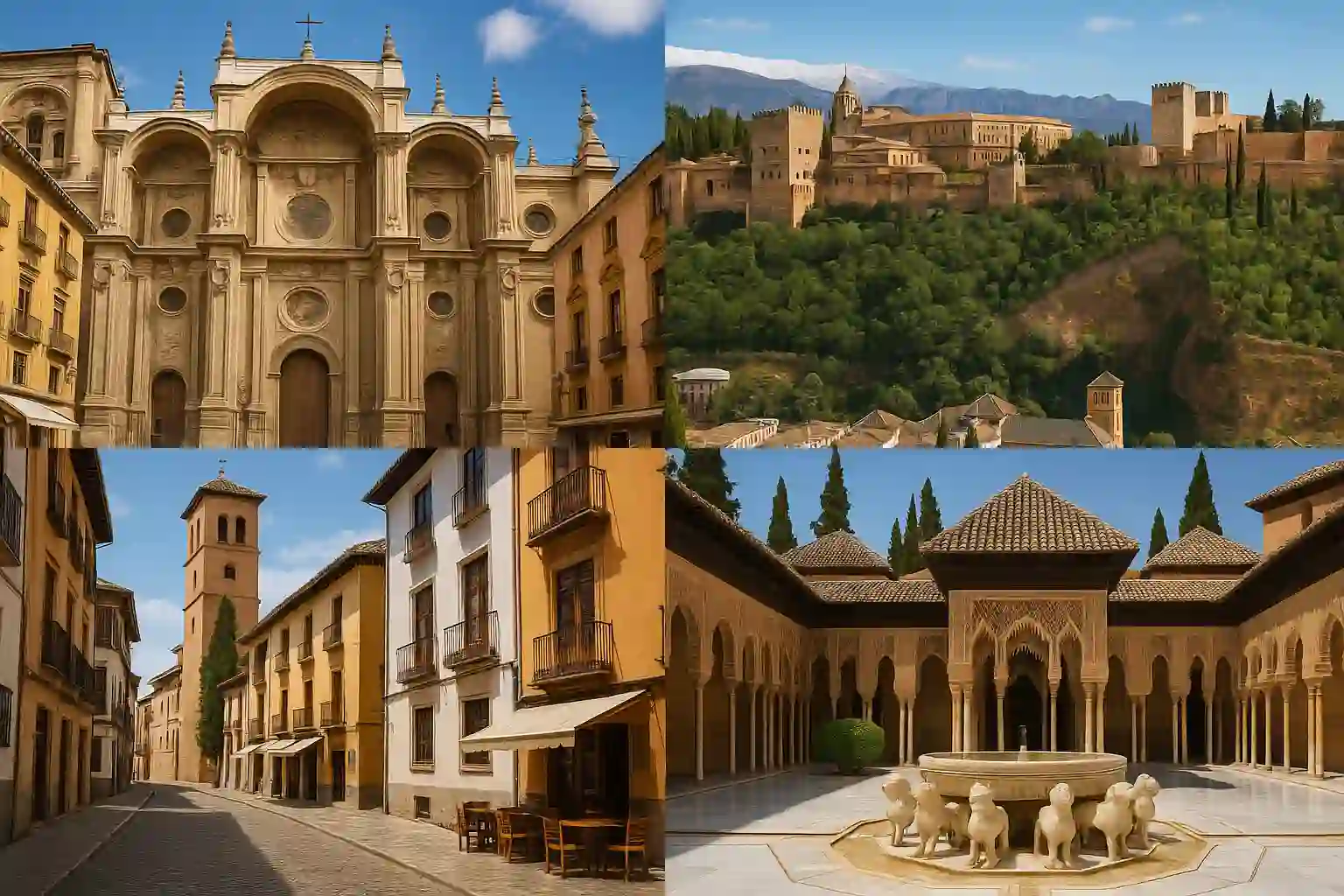Granada City & Attractions – Culture, Light and Living History

The Soul of Granada
To understand Granada is to embrace contrast. The city rises from Moorish foundations yet breathes a modern Andalusian rhythm. Morning light filters through the Alcaicería, the ancient silk market, while students fill cafés near Plaza Nueva with languages from every continent. Granada is a meeting of worlds: a place where call to prayer once met church bells — and where today, flamenco echoes beneath the same sky.
The Cathedral and Royal Chapel
The Granada Cathedral is one of Spain’s grandest Renaissance monuments. Built over the city’s former Great Mosque, it embodies the shift from Al-Andalus to Christian Spain. Its luminous dome, white marble columns, and golden altars reveal the vision of architect Diego de Siloé, who imagined light as divine presence. Attached to it is the Royal Chapel, where Ferdinand and Isabella rest — founders of modern Spain, yet dreamers still tied to this frontier city.
Albaicín & the Breath of Al-Andalus
Across the Darro River, the Albaicín unfolds like a white mosaic of memory. Its alleys twist uphill toward Mirador de San Nicolás, where the Alhambra burns gold at sunset. Here you walk through living history: jasmine-scented patios, Moorish arches, and echoes of Arabic verse inscribed on ancient walls. The quarter retains the geometry of Al-Andalus — inward, intimate, contemplative.
- Mirador de San Nicolás – The most beloved viewpoint, uniting sky, stone, and snow.
- El Bañuelo – A well-preserved 11th-century Hammam reminding visitors that water once shaped life and ritual.
- Carmen Houses – Traditional Albaicín homes with terraced gardens, fruit trees, and fountains — the heart of Granada’s domestic architecture.
Sacromonte & the Fire of Flamenco
Beyond the Albaicín, caves pierce the hillside of Sacromonte — a district born from exile and creativity. After 1492, displaced peoples, including Roma and Moriscos, carved homes into the rock. In these caves, flamenco was born — a language of survival and emotion. Flamenco shows in Sacromonte are not staged spectacles but dialogues between pain and pride, echoing centuries of resilience.
Baths and Silence: The Hammam Tradition
The Arab baths of Granada revive the sensory philosophy of Al-Andalus — where cleansing was an act of harmony. Within candlelight and steam, you feel time dissolve. Alternating hot, warm, and cold pools symbolise balance between body and soul. The silence of the Hammam invites reflection: as the city hums outside, this sanctuary remains a space of stillness and continuity.
Local Life & Tapas Culture
Granada’s social rhythm is written in its taverns. Tapas are not side dishes — they are a philosophy. With every drink, another story appears on the table: olives from the Vega, grilled octopus, fried eggplant drizzled with honey. Students, artists, and old friends fill the bars of Calle Navas and Plaza de la Romanilla, where time bends to conversation. Here, you understand that Granada’s charm lies not only in its monuments, but in its pauses.
Views, Light & Landscape
The city’s geography is dramatic — framed by the Sierra Nevada and opened toward the plains of the Vega. The best view is still from Mirador de San Nicolás, but wander to San Miguel Alto for solitude, or Carmen de los Mártires for gardens kissed by wind. Each viewpoint offers a different emotion: grandeur, intimacy, or nostalgia. At dusk, when the last rays hit the red walls of the Alhambra, the city feels suspended between heaven and earth.
Modern Granada & its Spirit
Today Granada remains both ancient and young. The university fills the streets with energy; festivals animate the plazas; artists reinterpret tradition through modern eyes. Yet despite its evolution, Granada preserves what makes it singular — a poetic awareness of transience. It reminds you that beauty is not only what endures, but what disappears slowly in light and song.
To know Granada is to accept its rhythm: sunlight and shadow, history and present, silence and song. It is a city best discovered by walking — not to arrive, but to listen.
